Stagnant optic disc: causes, symptoms, and treatment characteristics
Many patients after visiting the office of an ophthalmologist face a diagnosis of "congestive optic nerve".The term is not always clear, which causes patients to seek additional information. What is accompanied by a similar condition and what complications is fraught with? What are the main reasons for the development of stagnation? What can modern medicine offer as a cure?
What is pathology?
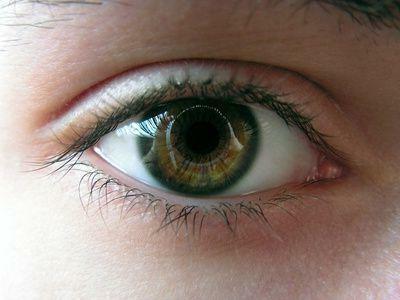
To begin with it is necessary to understand the meaning of the term. Not everyone knows that in fact, this diagnosis implies swelling. A congestive optic disc is a pathology that is accompanied by edema, and its appearance is not associated with an inflammatory process.
This condition is not an independent disease. Puffiness in most cases is associated with a persistent increase in intracranial pressure. This problem is encountered not only in adulthood - often a stagnant disc of the optic nerve in a child is diagnosed. This pathology, naturally, affects the eyesight and in the absence of treatment can lead to nerve atrophy and blindness. Edema can be one-sided, but, according to statistical studies, the ailment often affects both eyes at once.
Congestive optic disc: causes of

As mentioned, in most cases, puffiness develops against a background of increased intracranial pressure. And there can be many reasons for this:
- About 60-70% of cases, a congestive optic nerve disk is associated with the presence of a tumor in the brain. To date, it has not been possible to determine whether there is a correlation between the size of the lesion and the appearance of puffiness. On the other hand, it is known that the closer the tumor is to the sinuses of the brain, the faster the stagnant disc forms and progresses.
- Inflammation of the cerebral membranes( in particular, meningitis) can also trigger pathology.
- To the risk factors also include the formation of an abscess.
- A congestive disc can develop as a result of a craniocerebral trauma or a hemorrhage into the ventricles and brain tissue.
- The same pathology is sometimes observed in hydrocephalus( a condition that is accompanied by a violation of normal outflow of the cerebral fluid and its accumulation in the ventricles).
- The presence of uncharacteristic atrioventric messages between the vessels leads to swelling of the tissues.
- Often the cause of the development of the stagnant disc of the optic nerve are cysts, as well as other formations that gradually increase in size.
- Similar pathology can develop against a background of thrombosis of blood vessels that provide blood circulation in the brain.
- Other possible causes include diabetes mellitus, chronic hypertension and other diseases that eventually lead to metabolic and hypoxic lesions of the brain tissue.
In fact, it is very important during diagnosis to determine the cause of the development of the edema of the optic nerve, as this depends on the scheme of therapy and the rapid recovery of the patient.
Features of the clinical picture and symptoms of the pathology of
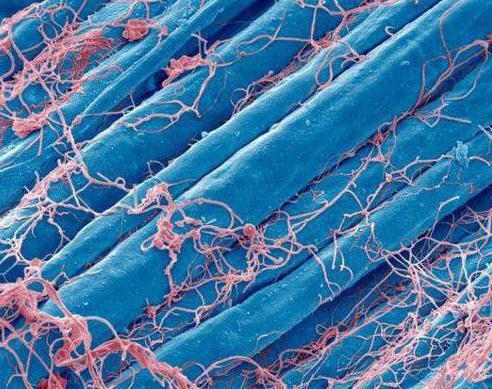
Of course, the list of symptoms is something that should be read. After all, the earlier one or another violation is noticed, the faster the patient will turn to the doctor. Immediately it is necessary to say that in the presence of this pathology normal vision is preserved, and for a long time. But many patients complain about periodic headaches.
For a congestive optic nerve disk, a sharp deterioration in vision, including blindness, is characteristic. As a rule, it is short-lived, and then everything comes back to normal for the time being. A similar phenomenon is associated with spasm of blood vessels - for a moment the nerve endings cease to receive nutrients and oxygen. In some patients, such "attacks" are observed only occasionally, other patients suffer from changes in vision almost every day. It is not necessary to talk about how dangerous the abrupt blindness can be, especially if at that moment a person drives a car, crosses the street, works with a dangerous tool.
Over time, the retina is involved in the process, which is accompanied by a significant decrease in the field of vision. When examining the fundus, the doctor may notice small hemorrhages, which occurs because of a circulatory disturbance in the structures of the eye analyzer. If you have these symptoms, you need to see a doctor as soon as possible.
The stages of the development of the disease
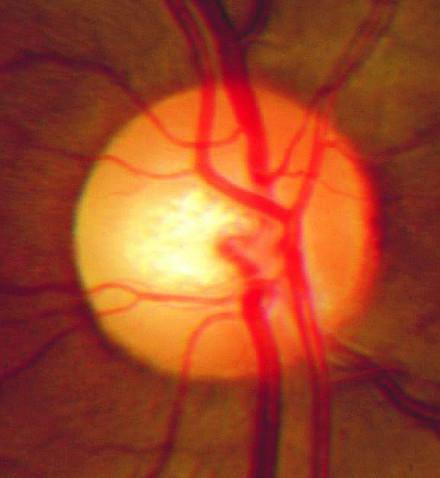
It is accepted to distinguish several stages of development of pathology:
- At the initial stage there is disc hyperemia, narrowing of small arteries and convolution of venous vessels.
- The marked stage - congestive optic nerve disk increases in size, small hemorrhages appear around it.
- In a strongly pronounced phase, the disk strongly permeates the vitreous zone, changes are observed in the area of the retina yellow spot.
- This is followed by the stage of atrophy, in which the disk is flattened and becomes dirty gray. It is during this period that noticeable vision problems begin to appear. First, a partial, and then complete loss of vision is observed.
Initial stage of the disease and its peculiarities
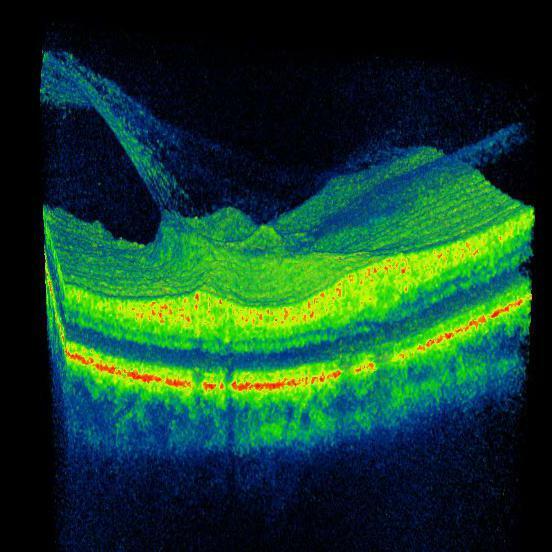
As already mentioned above, at the initial stages of the development of pathology, the patient may not even suspect the presence of a problem, since some severe visual impairment is simply absent. During this period, it is possible to diagnose the disorder - as a rule, it happens by chance during a routine ophthalmologic examination.
Disks swell and increase in size, the edges of them are indistinct and go into the vitreous region. Approximately 20% of patients have a pulse in small veins. Despite the absence of visible symptoms, the retina also begins to swell.
What happens when the ailment develops further?
In the absence of treatment, you can already notice some signs. What complications causes a congestive optic disc? Symptoms look pretty characteristic. Patients gradually reduced visual acuity. During the examination, you can see the expansion of the blind spot.
In the future, stagnation of blood in the veins, and the violation of blood circulation, as is known, affects the work of the optic nerve. The swelling of the disc is worse. The disease can go into a chronic phase. At this stage, visual acuity then improves, then falls sharply. In this case, a narrowing of the normal field of view can be observed.
Modern diagnostic methods
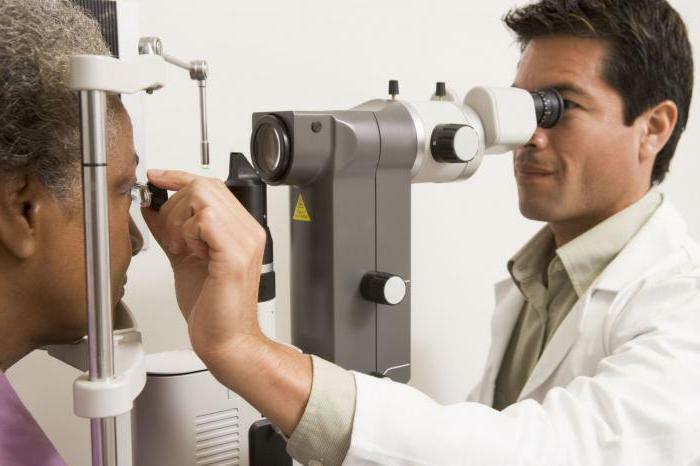
A congestive optic disc is a disease that can be diagnosed by an ophthalmologist, since with a thorough examination and examination of the eyes, a specialist may suspect that something is amiss. But since pathology is associated with diseases of the nervous system, the treatment is performed by a neurologist or neurosurgeon.
The presence of edema can be accurately established during retinotomography. Further studies are underway to determine the degree of edema development and to identify the main cause of the development of the disease. For this, the patient is sent for ultrasound examination of the optic nerve. Further X-ray examination of the skull, computed tomography and optical coherence tomography are carried out.
Congestive optic disc: treatment of
Immediately it is necessary to say that therapy largely depends on the cause of development, since it is necessary to treat, in the first place, a primary disease. For example, when meningitis, patients are prescribed appropriate antibacterial( antifungal, antiviral) drugs. With hydrocephalus, it is necessary to ensure a normal circulation of the cerebrospinal fluid, etc.
In addition, a congestive optic nerve wheel requires maintenance therapy in order to prevent the development of secondary atrophy. To begin with, dehydration is carried out, which removes excess fluid and provides a reduction in edema. Patients are also prescribed vasodilator drugs that normalize blood circulation in the nerve tissue, providing cells with the necessary amount of oxygen and nutrients. Part of the treatment is the reception of metabolic drugs, which improve and maintain metabolism in neurons, ensuring normal functioning of the optic nerve.
When the primary cause is eliminated, the congestive optic nerve disc disappears - the work of the brain and the visual analyzer comes back to normal. But the lack of treatment often leads to a complete loss of vision. That's why in no case should not abandon therapy and disregard the advice of a doctor.
Are there preventive measures?

Immediately it is worth saying that there are no drugs or specific drugs that can prevent the development of pathology. The only thing that doctors can recommend is regular preventive checks from an ophthalmologist. Naturally, it is necessary to avoid situations that threaten brain trauma.
All infectious and inflammatory diseases, especially if it is a nervous system, must be treated, and the therapy does not stop until the moment of complete recovery of the body. At the slightest disturbance of vision or the appearance of anxious symptoms, you need to contact an ophthalmologist or a neurologist.
